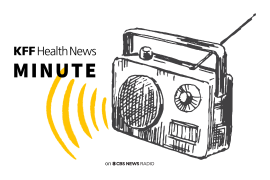All 50 States, District of Columbia Implemented Medicaid Cost-Containment Measures in FY 2003; Medicaid Spending Growth Declines for First Time in Seven Years, Report Says
Medicaid spending growth in fiscal year 2003 increased 9.3%, compared with a 12.8% rise in the previous year, marking the first decline in seven years, according to a report released Monday by the Kaiser Commission on Medicaid and the Uninsured, the Wall Street Journal reports. At the same time, all states and the District of Columbia enacted Medicaid cost-containment measures in FY 2003 to counter budget problems, the report, composed of data from the states collected by Health Management Associates, says (Lueck, Wall Street Journal, 9/23). In contrast to Medicaid spending, private health insurance premiums rose to 13.9% this year, compared to 12.9% last year, Reuters reports (Dixon, Reuters, 9/22). According to the report, 20 states said that higher enrollment and 16 states said that prescription drug costs are the largest factor behind Medicaid costs (Pear, New York Times, 9/23). States' Medicaid programs experienced a 7.8% enrollment increase in FY 2003 (Heil, CongressDaily, 9/22). According to the report, 50 states controlled drug costs in their Medicaid programs, 50 states reduced or froze Medicaid payments to providers, 34 states reduced or restricted Medicaid eligibility, 35 states reduced Medicaid benefits and 32 states increased beneficiaries' copays over the last three fiscal years (Kaiser Family Foundation release, 9/22).
Future Cost-Containment Moves
State officials expect to make further cuts to their Medicaid programs in FY 2004, the report states. In upcoming budgets, 49 states plan to reduce or freeze provider reimbursements, and 21 states will increase copays for prescription drugs or medical services, according to the report (Kaiser Family Foundation release, 9/22). Other planned cost-containment measures include prescription drug cost controls (44 states); benefit reductions (20 states); and stricter eligibility standards (18 states) (Wall Street Journal, 9/23). Diane Rowland, executive director of the KCMU and executive vice president of the Kaiser Family Foundation, said that Medicaid coverage likely will continue to decline, adding, "Many will get less care and others will lose it altogether" (Austin, Denver Post, 9/23). Vernon Smith, one of the study's authors and former director of Michigan's Medicaid program, said that allocating money for Medicaid programs "is only going to get more difficult" for states, as they continue to face financial shortfalls (CongressDaily, 9/22). Robert Day, director of Kansas' Medicaid program, said, "The crisis in Medicaid is simply a mirror for what's going on in health care throughout the country. It will soon be a large crisis for the private sector" (Kemper, Los Angeles Times, 9/23).
Looking for Help
According to the report, a $20 billion aid package, including $10 billion for Medicaid, approved by Congress last year helped some states delay some Medicaid cuts (Wall Street Journal, 9/22). CongressDaily reports that state officials are looking for further assistance by having the federal government cover the drug costs of beneficiaries eligible for both Medicare and Medicaid, an expense currently covered in part by states. A provision in the House Medicare bill (HR 1) calls for a Medicare drug benefit to cover dual-eligibles, but the Senate version (S 1) does not (CongressDaily, 9/22). John Holahan, director of health policy research at the Urban Institute, said, "It is hard to see how the federal government can give much relief, given the [federal] deficits we see" (Los Angeles Times, 9/23).
Two Additional Reports Address State Medicaid Spending
The KCMU also released two additional reports. The first report finds that a recent decline in state tax revenue is the "primary cause" of fiscal problems encouraging states to make reductions to their Medicaid programs (KFF release, 9/22). According to the report, by the Nelson Rockefeller Institute of Government for the KCMU, current state tax revenues measured as a share of the economy declined by 7.4%, more than twice the percentage of declines in previous U.S. economic recessions (Los Angeles Times, 9/23). Many states have "little prospect of marked improvements in the next few years" to alleviate current financial shortfalls, and "public programs like Medicaid are likely to be the target of more cuts," according to a KFF release (KFF release, 9/22). Medicaid spending growth has played a smaller role than the dropoff in tax revenues in states' fiscal problems, the report finds (Los Angeles Times, 9/23). Donald Boyd, director of fiscal studies at the Rockefeller Institute, said, "The fiscal crisis facing states is far worse than the condition of the nation's economy" (New York Times, 9/23). The second report, conducted by the Urban Institute for the KCMU, says that increases in Medicaid spending growth have been fueled by enrollment increases as a result of the slowed economy and continuing increases in hospital and prescription drug costs (KFF release, 9/22). Medical expenses of beneficiaries who are elderly or have disabilities accounted for nearly 60% of the growth in Medicaid spending over the last two years, the report says (Los Angeles Times, 9/22). Per-beneficiary spending rose by 8.6% between 2000 and 2002, according to the report; however, the report notes that increase is lower than per-patient spending in the private sector (KFF release, 9/22).
The reports are available online. A webcast of a briefing to release the reports is available online at kaisernetwork.org.






